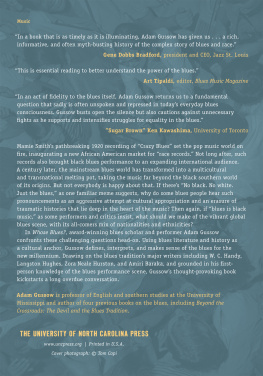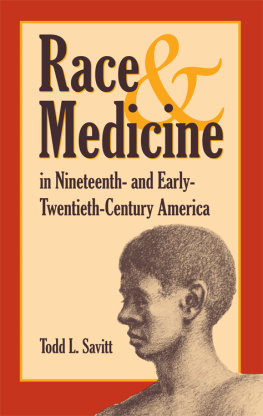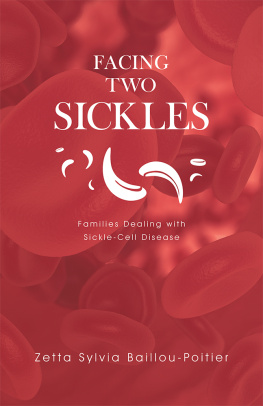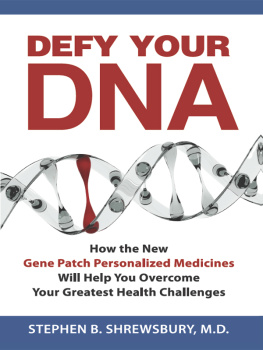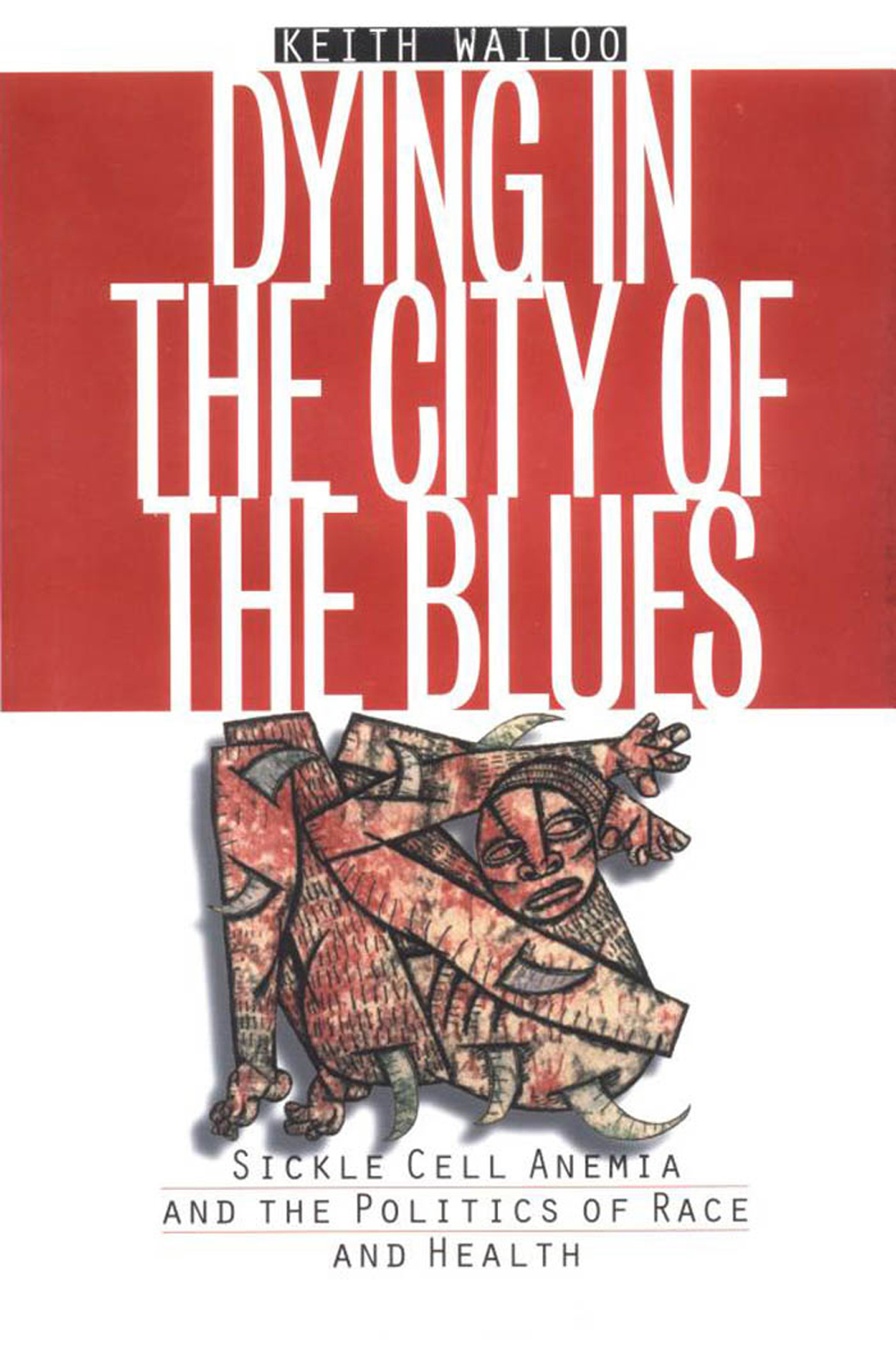Acknowledgments
I must begin with a word of thanks to the late Dr. Lemuel Diggsa University of Tennessee pathologist who figured prominently in the history of sickle cell disease and in the story of race and health in Memphis. In 1992 I came across Diggss corpus of writings on sickle cell disease dating back to the 1920s. I remember inquiring at the University of Tennessee archives about the availability of Dr. Diggss papers and being quite surprised to hear the archivist say that Diggs (at ninety-two years old) still came in to do research from time to time. During the following years I was able to visit the engaging and lucid Lemuel Diggs and to interview him about his longstanding interest in sickle cell disease. I learned that he had followed the disorder where it took him, from its years of obscurity in the 1920s through its rise to scientific significance in the 1950s and its increasing social and political significance in the 1970s, 1980s, and into the 1990s. His reminiscences and scrapbooks prompted me to begin a broad exploration of the ways in which this singular malady opened a window on the history of race relations, health care, and scientific medicine in Memphis, the South, and America. That exploration has resulted in this volume. Dr. Diggs, who died in 1995, might not have agreed with all that I say in these pages, but I owe him special thanks for starting me on the journey that has resulted in this book.
Along the way, many people have heard me present aspects of this project, and their comments have helped me to sharpen and strengthen the work. My colleagues in the Department of Social Medicine at the University of North Carolina at Chapel Hill have enriched the project in ways too numerous to detail. Also, I must thank the faculties in history departments where this work was presented: at Florida International University, the University of Alabama at Birmingham, Rutgers University, the University of Miami, and Carnegie Mellon University. I received thoughtful feedback from the faculty and students in the Departments of History of Science and of Afro-American Studies at Harvard University where I spent a year as visiting professor in 199899. This volume is also much improved thanks to audiences at the College of Physicians of Philadelphia, the Sickle Cell Disease Association of America, the American Association for the History of Medicine, the American Public Health Association, Massachusetts Institute of Technology, the Institute for Health, Health Care Policy, and Aging Research at Rutgers University, and the schools of medicine of Case Western Reserve University, the University of CaliforniaSan Francisco, the University of Pittsburgh, and the University of Virginia.
Many individuals must be singled out for their critical engagement and helpful suggestions in these and other settings: Caroline Acker, Bridie Andrews, Kwame Anthony Appiah, David Barnes, John Beatty, Suzanne Blier, Charlotte Borst, Robert Brain, Jeffrey Brosco, N. David Cook, Alan Cross, Colin Davis, Jim Edmonson, Jonathan Erlen, Sue Estroff, Judith Farquhar, Peter Galison, Henry Louis Gates Jr., Evelyn Hammonds, Anne Harrington, Gail Henderson, Tera Hunter, John Kasson, Daniel Kevles, Nancy King, Bill Lachicotte, Jane Maienschein, Kenneth Manning, Harry Marks, J. Lorand Matory, Everett Mendelsohn, Robert Murray, Jonathan Oberlander, Robert Olby, James Pittman, Jack Pressman, Kendrick Prewitt, David Ransahoff, Don Reid, Charles Rosenberg, Barbara Rosenkrantz, Des Runyan, Jonathan Sandelowski, Barry Saunders, Todd Savitt, Steven Schlossman, Joyce Seltzer, Lynne Snyder, Donald Spivey, Joe Trotter, Conevery Bolton Valencius, Cornel West, and William Julius Wilson. My deepest gratitude goes to those who commented on the entire manuscript, specific chapters, and early outlines. This group includes Chris Feudtner, Nick King, Kenneth Ludmerer, Don Madison, Michael McVaugh, Katherine Park, Reggie Pearson, Stephen Pemberton, David Rosner, Molly Sutphen, Elizabeth Toon, Rachel Watkins, series editors Allan Brandt and Larry Churchill, reader Alex Lichtenstein, and editor Sian Hunter at the University of North Carolina Press. Finally, thanks to Patricia LaPointe of the Memphis and Shelby County Room of the Memphis and Shelby County Public Library, Ed Frank of the Mississippi Valley Collection at the University of Memphis, and various archivists at the Memphis and Shelby County Archives at the Cossitt Branch Library in Memphis, the National Archives and Records Administration in College Park, Maryland, the National Library of Medicine, the Tennessee State Library and Archives in Nashville, and the Library of Congress.
This book could not have been completed without the generous support of several organizations, foundations, and funding agencies. The University Research Council of the University of North Carolina at Chapel Hill provided a small grant that enabled me to begin this study. Later, financial assistance for research came from the Burroughs-Wellcome Fund, from the Ethical, Legal, and Social Issues Program of the National Center for Human Genome Research, and, most recently, from the James S. McDonnell Foundations Centennial Fellowship. I am extremely grateful to all of these organizations and their selection committees for this encouragement and support.
Finally, I must thank my wife and historian, Alison Isenberg, for her valuable ideas and vital comments from the start through all of the other important phases of this project. Thanks also to my parents, Bert and Lynette, and to my brother, Christopher, for your support, and to little Elliot for being so cooperative, happy, and understanding over the last year. I could not have completed this work without you all.
 | Dying in the City of the Blues |
Introduction
Pain and Suffering in Memphis
Throughout history, numerous diseases have been used to draw attention to the African American body and to represent particular aspects of the African-American condition. In the 1850s southern physician Samuel Cartwright invented dyaesthesia Aethiopis, a disorder that he claimed caused obtuse sensibility of the body and insensitivity to pain when subjected to punishment in slaves. The disease was a convenient invention, for it could be used to highlight just how different enslaved blacks were from their white owners. Biological difference could be used to excuse plantation whippings and to explain the excessive brutality of slavery. Throughout the nineteenth and twentieth centuries many other conditions, syndromes, and pathologies among blacksfrom tuberculosis to venereal diseasehave been used similarly to moralize about African American status, sexuality, intelligence, education, or economic condition. Whether these discussions focused on what we term real pathologies or invented ones, the discourse of Negro disease has always reflected deeper moral quandaries in society. Were black people degraded by or biologically suited to slavery? Was black sexuality a danger to whites and to society? Were black people sicker because they were innately different, or because they were kept socially unequal in America? The stories of particular maladies have been mined and interpreted throughout history because they appear to provide the answers to such questions.



